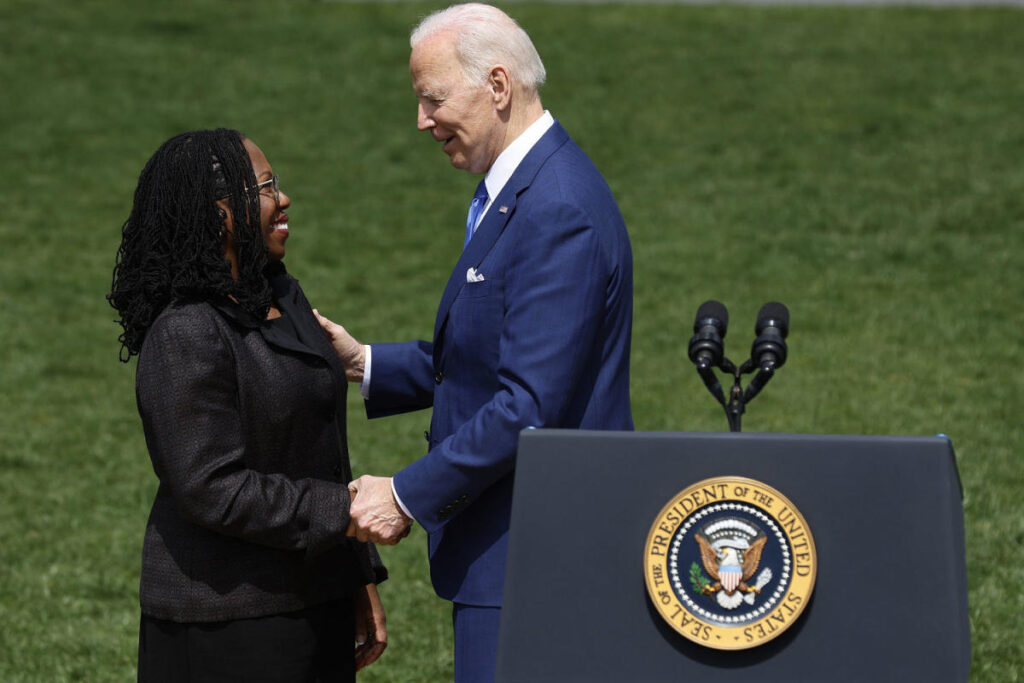The Senate’s recent confirmation of President Joe Biden’s 235th federal judge marks a significant accomplishment for the current administration, surpassing the total leveraged by former President Donald Trump during his tenure. This landmark vote, celebrated by Senate Majority Leader Chuck Schumer, underscores the historical context of Biden’s judicial appointments as he prepares to leave office. With this confirmation, Biden’s judicial legacy includes one Supreme Court justice, 45 appeals court judges, 187 district court judges, and two judges on the U.S. Court of International Trade. Schumer emphasized the monumental nature of these confirmations, stating that this is the highest number of judicial appointments under any president in decades.
Biden’s appointment record not only highlights quantity but also the emphasis on diversifying the judiciary in terms of both professional and demographic representation. The White House articulated pride in selecting judges from varied backgrounds, including public defenders, civil rights lawyers, and a strong array of judges with experience in multiple legal arenas. This approach marks a departure from past administrations that favored nominees with prosecutorial and corporate backgrounds. Notably, Biden’s confirmation of Justice Ketanji Brown Jackson as the first Black woman on the Supreme Court signifies a crucial milestone in enhancing representation within the highest levels of the judiciary.
Despite these achievements, Biden’s judicial tenure is contrasted sharply with Trump’s legacy, particularly regarding Supreme Court nominations, as Trump successfully appointed three justices that solidified a conservative ideological majority that might prevail for decades. Republican senators voiced criticism of Biden’s judicial appointments, framing the nominees as excessively liberal. Notably, Sen. Ted Cruz expressed concerns over what he termed “zealots” being confirmed to judicial positions, while incoming Judiciary Committee Chair Sen. Chuck Grassley hinted at a commitment to surpass Biden’s record, suggesting that Trump could end his term with a higher number of total confirmations.
Republican senators emphasized a strategy of being diligent in filling judicial vacancies rather than competing numerically with Biden’s record. As the GOP heads into a control of the Senate, they acknowledge the limited number of judicial vacancies available, contrasting with the substantial opportunities Trump had during his first term. The perspective shared by some Republican senators indicates a shift in strategy focused on finding qualified nominees rather than simply achieving a higher numerical count.
Democratic senators remain cautious amidst their successes, recognizing the implications of potential future vacancies left by the departing Democratic administration. Sen. Richard Blumenthal cautioned against complacency, suggesting that the judiciary’s future will hinge on how vacancies are filled moving forward. The need to actively oppose and vet future nominees appointed by a Republican-controlled Senate underscores the high stakes associated with judicial appointments. Considerations of judicial composition reflect a broader ideological battle that could shape legal interpretations and policies affecting fundamental rights for generations.
In summary, the recent judicial confirmations present a critical reflection of the ideological landscape of the federal judiciary. Biden’s unprecedented judicial appointments focus on fostering diversity within the courts, but they also foreshadow ongoing struggles to maintain this progress against an incoming Republican majority. With lifetime appointments at stake, the ability of both parties to shape the judicial landscape will remain a significant area of contention and consequence in the political arena. As Biden prepares to conclude his presidency, understanding the implications of judicial legacies will remain vital for policymakers and citizens alike, as these court appointments will resonate through policies that impact fundamental rights and legal standards in the United States.

